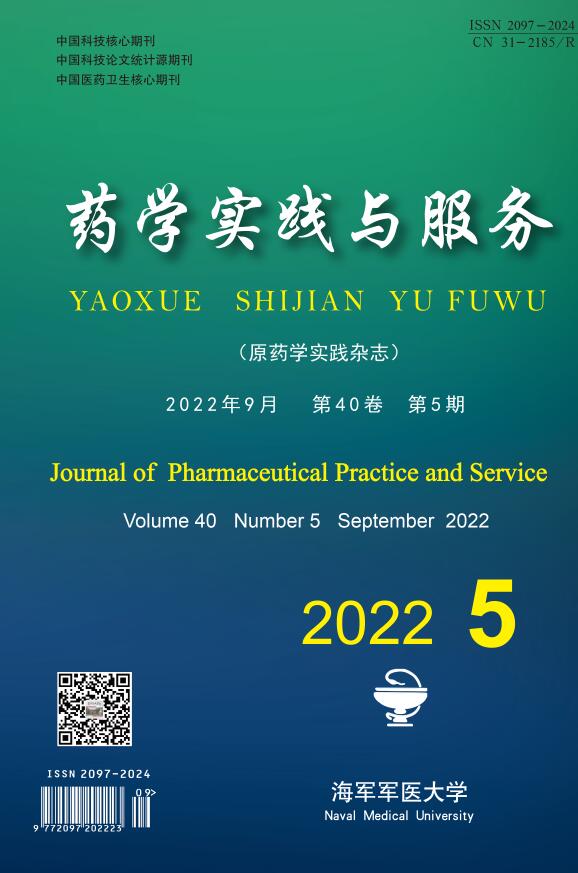-
人体表面及内部生活着数量巨大、种类多样的微生物,其中绝大部分是由细菌菌群组成的。肠道微生物和中枢神经系统之间存在相互作用,肠道微生物的异常可以通过“菌-肠-脑”轴参与到机体认知和社会行为等的复杂调控中,且已有多项研究发现肠道菌失调与抑郁症的发生密切相关[1],会通过多种不同的方式和途径加速或诱导抑郁症的发生。口服药物治疗是目前常用的方式,可在一定程度上减缓病人症状,但是目前部分抗抑郁药物仍具有一定的局限性[2]。现已有研究发现,益生菌可以通过多重机制来控制抑郁样行为[3],这为我们探索抗抑郁药物的研发提供了一个新的方向。本综述将从抑郁症、肠道菌代谢产物、作用分子水平出发探讨抑郁症的机制,在对现有益生菌生物制剂治疗抑郁症的研究发现的基础上,对肠道菌这一新靶点进行展望,为寻找抗抑郁药物研发的方向提供帮助。
-
目前抑郁症确切的病理生理机制仍不清楚,多集中在单胺神经递质紊乱、肾上腺轴功能障碍、缺乏神经营养因子和促炎细胞因子过度等方面,随着肠道菌在抑郁症中的调控机制逐渐被揭示,肠道菌对相关致抑郁小分子的作用也逐渐被证实。
-
据报道,细胞炎性因子在正常大脑以及大脑发育过程中十分重要,促炎因子可以直接或通过强效激活下丘脑-垂体-肾上腺轴(HPA轴)来诱导或加速抑郁症的发病[4]。HPA轴功能异常是抑郁病理生理机制的重要组成部分之一。目前有关抑郁症发病机制中作用的促炎性细胞因子有TNF-α、IL-1和IL-6 等,另外新的分子和机制也逐渐被发现。动物研究发现,动物在注入促炎性细胞因子后出现了一系列与抑郁症表现非常相似的行为学变化[5]。
-
脑源性神经营养因子假说是抑郁症发病机制假说之一, BDNF是神经生长的重要调节因子, 当BDNF水平受到影响减少时会对抑郁症的发生起到促进作用[6],有研究表明BDNF可以参与神经突触可塑性调控,与情绪障碍有很大的联系。
-
神经递质是神经细胞交流的信使, 在个体心理和行为中发挥着重要作用, 抑郁症与神经递质异常有直接关系[7]。抑郁症假说之一表明抑郁是由于脑内单胺类神经递质缺乏引起的,另外有研究发现,其他的神经递质也有可能对抑郁症产生影响[8]。
-
HPA轴是指下丘脑-垂体-肾上腺轴,糖皮质激素就是这条轴上的介质之一。研究发现糖皮质激素对维持机体正常生理状态十分重要,参与中枢神经系统的调节,可对抑郁的产生起到重要影响[9]。HPA轴的异常是导致神经行为异常的原因之一。
-
某些针对抑郁患者或抑郁大鼠的研究发现,正常与抑郁状态下其肠道菌群的丰度存在显著差异,即抑郁状态会导致肠道菌丰度的改变[10-15],大多导致拟杆菌门丰度增高而厚壁菌门丰度降低[10-13]。反之,肠道菌的紊乱对抑郁症的发生起到诱导或加速作用这一点也在多项研究中得到肯定[16]。
-
在门水平上,Liu 等[10]通过对抑郁症患者和健康者进行比对发现两种状态下的肠道群的显著不同,拟杆菌门 Bacteroidetes增高,而厚壁菌门 Firmicutes 降低。除此之外,Chen 等[11]的实验也发现,抑郁症患者肠道菌在拟杆菌门Bacteroidetes、变形菌门 Proteobacteria 、厚壁菌门Firmicutes、放线菌门 Actinobacteria 这4个门中存在显著差异。
在正常与抑郁模型大鼠肠道菌中,差异同样显著存在。Yu 等[12]的实验研究表明了这一点,他们用16S rRNA基因测序法,对由慢性多变压力刺激建立的抑郁大鼠模型进行基因测定,发现与正常大鼠相比,抑郁大鼠模型肠道中厚壁菌门Firmicutes含量是减少的,而拟杆菌门Bacteroidetes含量是增多的。同样证实这一点的还有刘佳琳[13],她通过对慢性不可预知温和应激实验所造的抑郁模型大鼠进行的实验,发现与正常大鼠相比,抑郁模型大鼠盲肠内容物中拟杆菌门Bacteroidetes和变形菌门Proteobacteria相对丰度升高,厚壁菌门Firmicutes的相对丰度降低。
-
在科、属水平上,Jiang等[14]采用测定16S RNA这一细菌身份证片段基因的方法测定 30 例抑郁症患者肠道微生物的变化,发现氨基酸球菌属Acidaminococcus在抑郁症患者中表达上调。而荣晗等 [15]通过选取30岁以上的复发性抑郁症患者做肠道菌群丰度和种类及基因功能测定研究,也证实了氨基酸球菌属表达上调。
在大鼠抑郁模型中,Yu 等[12]实验结果表明,抑郁状态大鼠肠道中的分节丝状菌Candidatus Arthromitu 、颤杆菌克属 Oscillibacter 明显增加,Marvinbryantia、棒状杆菌属 Corynebacterium 、冷杆菌属 Psychrobacter、Christensenella Lactobacillus、Peptostreptococcaceae incertae se-dis、Anaerovorax、Clostridiales incertae sedis 和粪球菌属 Coprococcus 明显降低。刘佳琳[13]探究的抑郁模型大鼠显示,寡源杆菌属 Oligella 、另枝菌属 Alistipes 和脱硫弧菌属Desulfovibrio相对丰度显著增高而乳杆菌属 Lactobacillus 和罗姆布茨菌属Romboutsia 相对丰度显著降低。
-
有研究显示肠道微生物可以调控HPA轴、细胞因子和单胺类神经递质等,Messaoudi等[16]将含有双歧杆菌及乳杆菌的配方物质及空白安慰剂随机分配给重度抑郁症患者口服后,通过严格的评价标准,试验组患者的精神压力、抑郁、焦虑、敌对症状评分均有显著改善,这表明通过补充益生菌可以改善抑郁行为。综合目前对抑郁症的肠道微生物多样性研究报道可以看出,拟杆菌门和厚壁菌门是抑郁症的代表微生物,拟杆菌门与抑郁症正相关,而厚壁菌门与抑郁症负相关。拟杆菌门与厚壁菌门比例的改变会导致抑郁症的发生发展。这些方面均提示肠道菌群可能与抑郁症的发病存在相关性。
-
肠道菌代谢产物,如短链脂肪酸、吲哚等,被认为通过以下几种机制调节抑郁行为:对中央受体的直接作用;激活神经、免疫或内分泌途径的外周受体;组蛋白去乙酰化或DNA甲基化的表观遗传调控。通过代谢产物了解这些机制,有利于加深我们对抑郁症病因的理解,从而利用这些生物活性分子开发新策略进行有益的精神治疗。
-
SCFAs是由肠道菌群厌氧发酵不可消化的碳水化合物产生,极易在大肠中被吸收。已有研究表明SCFAs参与消化、免疫和中枢系统功能,通过控制3个最丰富的SCFAs(丙酸、乙酸和丁酸盐)可以缓解小鼠的抑郁症状[17]。研究发现,抑郁症(MDD)病人体内出现了丙酸、乙酸和丁酸盐的减少[18],而生活质量较高的人群拥有更多能够产生丁酸盐的肠道菌,如栖粪杆菌属 Faecalibacterium和粪肠球菌属 Coprococcus spp.,其中,栖粪杆菌属是肠道中最丰富的微生物属之一,对包括MDD在内的多种疾病具有重要的免疫功能和临床意义[19]。SCFAs能够结合并激活G蛋白偶联受体,使其在体内多个器官中广泛表达,推测SCFAs可能通过直接刺激神经通路或通过神经-内分泌和免疫激活的间接中枢作用来调控抑郁行为。
组蛋白去乙酰化酶活性的改变是抑郁的特征之一,例如,丁酸盐的全身给药诱导小鼠海马和额叶皮质的组蛋白乙酰化[20]以及反复注射丁酸钠通过海马组蛋白H3和H4的乙酰化介导抗抑郁作用[21]。色氨酸代谢改变是抑郁症的特征,其中,丙酸盐通过增加色氨酸羟化酶(TPH)促使色氨酸向5-羟色胺的转化[22]。
-
研究表明,色氨酸经宿主(TDO和IDO)和肠道菌酶(色氨酸酶等)代谢后产生具有既定情绪调节特性的神经活性分子,包括5-HT、犬尿氨酸和吲哚。只有不到5%的色氨酸被色氨酸羟化酶沿着甲氧基吲哚途径转化为5-HT,其余95%通过犬尿氨酸途径由TDO和IDO酶代谢。色氨酸代谢紊乱(即色氨酸从5-HT转移到犬尿氨酸代谢合成)可能是典型抑郁症表现在情绪、认知和睡眠障碍的部分原因[23]。在被定植色氨酸代谢细菌的动物体内发现了色氨酸减少和海马体5-HT浓度增加,并伴有类似焦虑行为的减少[24]。
吲哚通过增加与上皮细胞结构和功能有关的基因表达来增强肠上皮屏障功能,并且通过影响孢子形成、质粒稳定性与耐药性、生物膜形成和毒力在微生物群落中发挥重要作用。另外,吲哚进一步代谢经氧化和偶联的产物——氧化吲哚和2,3-吲哚醌,同样是具有神经活性的信号分子,能够调节运动功能和情绪行为。2,3-吲哚醌是一种内源性单胺氧化酶(MAO)B抑制剂和苯二氮䓬受体拮抗剂,在小鼠和大鼠中都具有抗焦虑的特性[25]。
-
其他肠道菌产生的代谢物质,如乳酸、胆汁酸、神经递质、胆碱代谢物、维生素等也会对抑郁产生一定影响。
乳酸是乳酸菌(乳酸乳球菌、格氏乳杆菌、罗伊氏乳杆菌等)、双歧杆菌和变形杆菌在哺乳动物寄主过程中对膳食纤维发酵产生的有机酸[26],可以被几种细菌转化为SCFAs,对整个菌池有贡献。其调节情绪行为的一个潜在机制是通过直接激活受体GPR81,在海马体、新大脑皮层和小脑表达[27]。
胆汁酸是由胆固醇衍生的类固醇酸,在肝脏合成后分泌到小肠,并在回肠吸收。胆酸(CA)和鹅去氧胆酸(CDCA)这两种主要的胆汁酸在人体和大鼠的肠道中通过肠道菌群进一步结构修饰,转化为二级和三级胆汁酸[28]。胆汁酸具有局部去污性,能够乳化亲脂分子,进而促进营养物质的消化和吸收。此外,胆汁酸可能通过破坏紧密连接的表达,导致肠和中央上皮细胞的通透性,从而导致严重的抑制[29]。有研究表明,胆汁酸的作用在一定程度上可能取决于其物理和化学性质,而这些性质又取决于微生物介导的化合物修饰[30]。另一个可能会影响胆汁酸行为结果的因素是受体介导的响应。此外,一些胆汁酸,如碎石胆酸,可刺激中枢PXR和维生素D受体(VDR),具有良好的抗抑郁作用[31]。
-
如今人们面临的各方面压力越来越大,抑郁症的发病率呈明显的上升趋势,已经成为一个严重的社会和医疗问题。但它发病机制十分繁杂,在治疗上有相当大的阻力。大量关于肠道菌的基础研究已经证实了肠道微生物的结构和多样性紊乱后会诱导或者加速抑郁症的发生,无论是临床统计观察还是实验动物模型检测,都证实了这一点,改善肠道微生物的状态能预防和治疗抑郁症,这一点也同样被研究佐证。
目前已有多项实验研究发现益生菌[32]以及中药复方提取物[33]等可以通过恢复抑郁状态下紊乱的肠道微生物结构来改善抑郁状态,这一点对抑郁症的治疗产生了极大的应用价值。但是基于肠道菌而进行抑郁症疾病药物研发的探究目前仍是处于初级阶段,对于抑郁症相关性高的肠道菌进行调控,是否会与其他肠道菌群产生反应而造成反作用或毒副作用影响机体健康,对于实验结果的普遍性和有效性能否做到更广泛的临床验证,对于直接补充肠道菌代谢产物是否比直接针对肠道菌群进行改造更有效,这些都是需要考虑的,因此,对于后续存在的问题有待继续挖掘和深入探索。
Advances in antidepressant therapy related to gut microbiota
doi: 10.12206/j.issn.2097-2024.202111034
- Received Date: 2021-11-06
- Rev Recd Date: 2022-02-13
- Available Online: 2022-09-29
- Publish Date: 2022-09-25
-
Key words:
- depression /
- gut microbiota /
- microbiome-gut-brain axis
Abstract:
| Citation: | WANG Qiannan, HUANG Xinhui, YANG Minxu, YANG Xingrui, ZHU Kehan, ZHOU Tingting. Advances in antidepressant therapy related to gut microbiota[J]. Journal of Pharmaceutical Practice and Service, 2022, 40(5): 422-426. doi: 10.12206/j.issn.2097-2024.202111034 |








 DownLoad:
DownLoad: